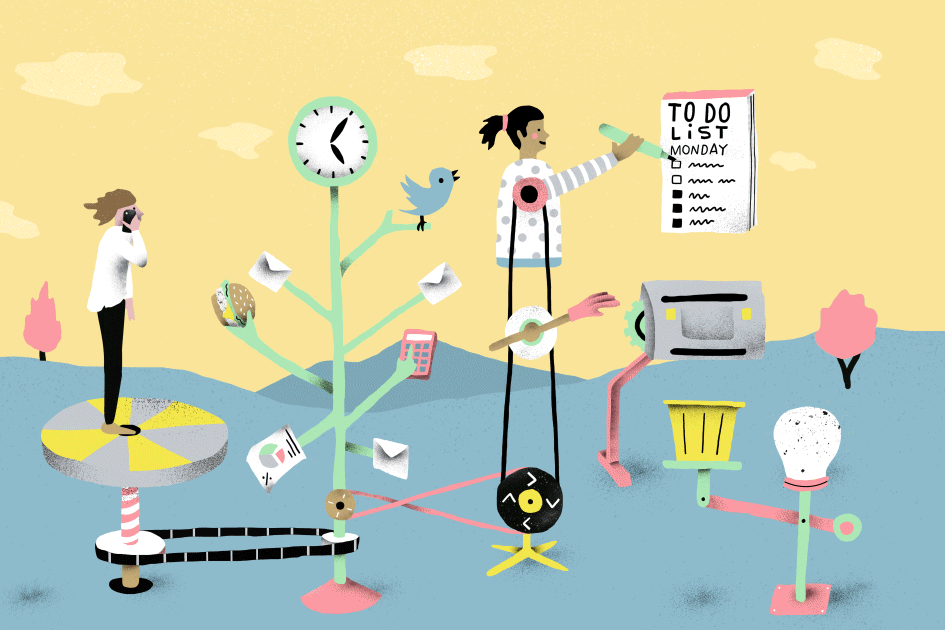
Analogue methods work for unidirectional requirements, a happy scenario in which one is doing just one thing at a time and is not required to juggle between different, conflicting and often confusing needs of the work at hand. I used to be on the analogue arrangement for most of my academic years, but towards the end when ‘things to do’ started running beyond an A4 size paper on a day to day basis, I realised that diving through a pile of paper was not an efficient way of making things work for me. That is when, my quest for conducting my business digitally started; 2 decades forward, to this day – the pursuit is still on. But I have made progress, my personal productivity system is not as wretched as it once used to be. In last two decades, the technology as well as my understanding of it, both have improved a lot. I must admit that evolution on part of the technology based solution has far exceeded my own understanding, though, and that is a happy thing to have happened, in this isolated case. In every other scenario one would expect the planner to be smarter than the plan or the process of planning itself.
Believe it or not, we have come to a world in which, a person is considered just as wise as his organisation system, just as thorough as his action planning, as meticulous as his execution and only just as useful as the outcome of his/her action. Work in a way has become our new signature. This phenomenon is new so we can’t be sure at this stage if it is a good thing or not, perhaps as a race we need to move on this path for at least a few more decades, for both pros and cons of the new ways of working to play itself out, completely. We are in proverbial Bronze Age of doing it all with technology, at this stage in our evolution.
Let’s dive into all four building blocks of the ideal organisation system, or as woke and cool kids say “GTD”.
💡Capture Idea(s)
This is perhaps the most important part of the puzzle, as without an idea there is nothing. Everything starts with an inkling. The human mind is unique in ways that it thinks, it is known to make strange and sometimes even seemingly unrelated connections/suggestions (though they actually are not). Best ideas often come about by merging two or more ideas sometimes even very different approaches together. Therefore, it becomes necessary to have a place digital or otherwise to store all the ideas, in a manner in which mix-matching of ideas is not just possible but also quick and convenient. A system in which one can try various combinations together. Both zoom in or zoom out as the case may be to land at the most optimum ground, in the thought experiment. The place of storage should also have indexing implements. The vitality of search-based retrieval cannot be overstated either. Otherwise, we are looking at a lost notebook scenario – “I had many ideas but they are lost and I do not know where they are”.
🗄️ Refine Organise
For an idea to become viable, it needs to be refined, churned and supported with data, information, and arguments. This phase of work is resource and time-intensive, depending upon the urgency of the task, its complexity and enormity; it could end up taking months if not weeks. The idea may have to be cross-referenced with contents/informations that may reside in a variety of distributed systems both on the world wide web and in printed literature (Books, magazine, white papers, academic research journals etc). Unless you’re living under a rock or are tucked away in a secure bunker somewhere in a desert, on a top secret mission: you’ll need to collaborate with other people, to make an idea come to life. So the platform/tool that you should elect should essentially have the ability to have multiple people come over and contribute. You’ll know how high or low is the possibility of you needing to work with other people working out of different geographies and times zones is in your line of work, therefore there may be a need to have digital collaboration as a feature. I should just mention the words, ‘security and encryption’ and let you establish the importance of these in your workflow.
⛑️ Make Actionable
An idea has been considered, worked upon with other people/resources and is now refined. You’ll now need to break the thing into bite-sized action items, aggregated plan of action, as it were. For an action to make sense, it should have a predecessor (other than for the first task), a successor (other than for a single step action), an owner, a timeline and a sequence number in the overall plan. It works like a charm if you can have, the project team also have easy, secure and need-based access to the research material and the various variables that went into making the plan come about so that they can benefit from the context. So you would need not just a task manager for it, but a platform with the ability of remote tracking, project management and also reporting.
📅 Schedule
Need I say more, about the criticality of scheduling, for executing a complex idea you will need a view of the timeline. The possibility of people engaged in the project along side doing other things is very real, and therefore you need to block time for the project; Thus making scheduling inevitable. Visibility of timelines also works as a reminder for people involved and encourages them to make it happen in time. It keeps the deadline in check and also keeps a log of delays which might creep in, for reasons outside the control of the team working on the project (people have been considered sincere in this assumption😊)
Before finding the near perfect platform I dribbled with these tools.
📠Apple Notes, One Note, Drafts and Google keep for: Capturing Ideas.
🗺Evernote and OneNote: Refining the idea.
🚦Apple reminders app, Microsoft to-do the app, Things : Action planning
🕰 Apple cal, Google calendar or outlook: Scheduling.
I bet you find similarities in and sympathies for, this mess of a workflow.
While the system worked, it was highly fragmented and demanded a lot of work in making sense of it all. Good memory played a key role in making things happen. There have also been moments in which I’ve got exasperated with all the shifting and switching that I had to do, say nothing about the cost of context switching.
My old workflow was serviceable but lacked panache, so I kept looking until I found, Notion, all in one workplace.
It has every feature, that I needed to make my workflow work for me.
- A simple, distraction-free block based note-taking canvas to capture ideas.
- Data bases, cross linking and roll ups to cross-refer ideas and content.
- Calendar view, to do, Gantt chart, and ability to assign tasks to other people.
- The ability to store documents, collaborating with other people
I highly recommend that you try Notion for your productivity.
Thank you, for your time and have a great rest of the Sunday!
